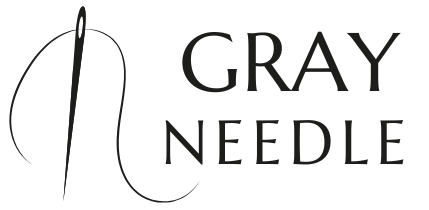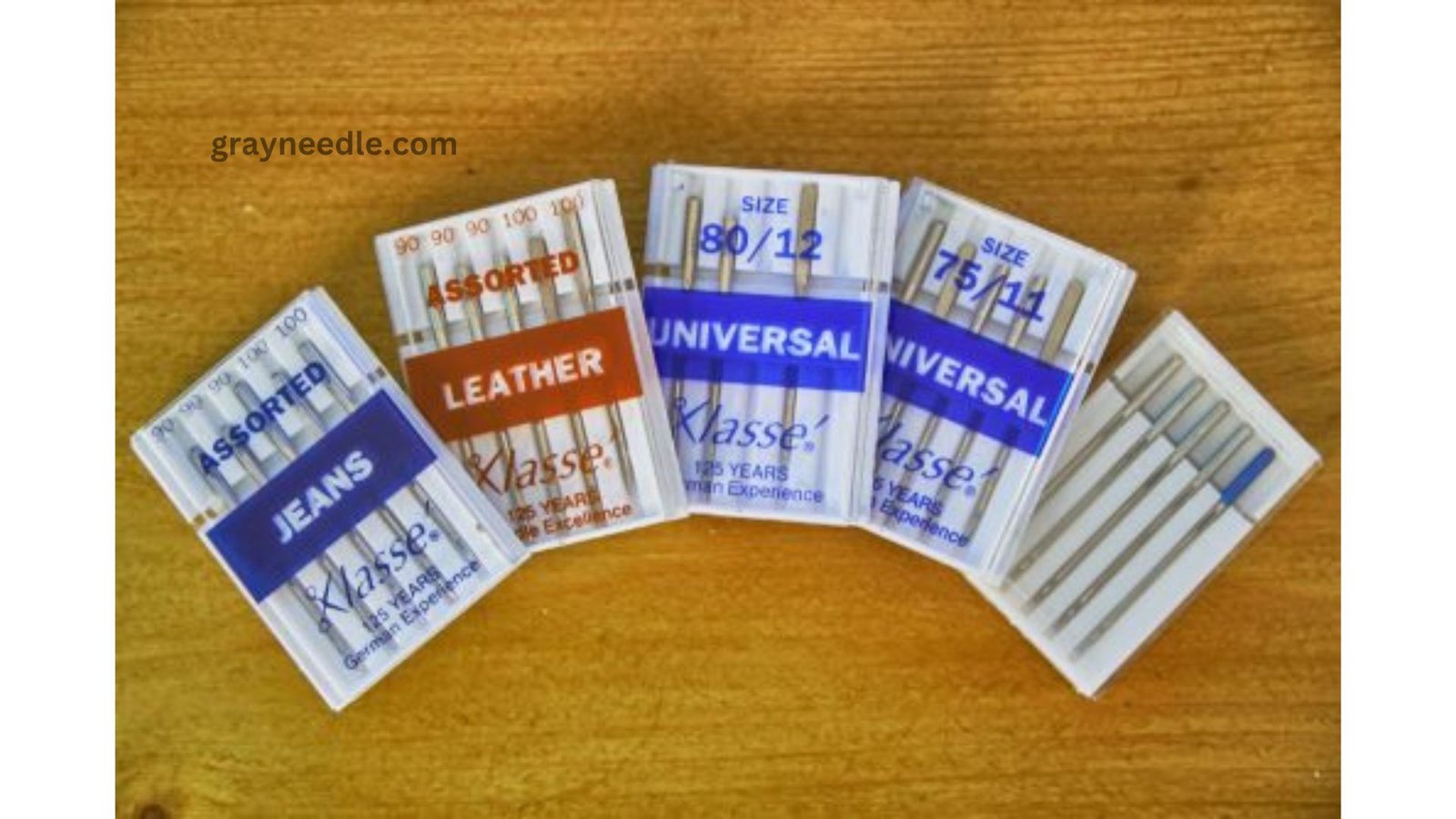We’ve been talking a lot about how frustrating sewing with knits can be, so hopefully that’s not depressing you too. I merely want to share these frustrating points with you so that you can steer clear of all the mistakes I’ve made with my own sewing technique over the years.
Choosing the right needle is crucial for producing smooth, consistent, and un-skipped threads when sewing knits. It will be nearly hard to stitch through your knit fabrics with any ease if you don’t have the correct needle.
Choosing the Right Needle for Knit Fabrics: Tips and Tricks
You’ve decided on a sewing pattern and the fabric to use for it, but which needle could be appropriate for a given cloth? Have you thought about the thread you could use? Selecting a needle and thread is nearly as crucial as selecting your fabric or design, since the incorrect choice of needle or thread type could result in issues that could be easily avoided. In continuation with my earlier post regarding sewing machine setup, I will be sharing content derived from my 1980s sewing machine instruction book, which is brimming with practical advice.
Test your needles before using them in your machine
Its first piece of advice is actually very useful: measure the size of your needle and thread on some leftover fabric from cutting out your pattern. Even if you’ve worked with the fabric previously and are familiar with the needle and thread, you should still use a little amount of scrap for testing at the start of every job because you’ll need to adjust the stitch length and tension. However, it can be a little intimidating if you don’t know what size needle to use, particularly if you don’t understand what the numbers on the needle signify.
At the haberdashery shop choosing a needle? What the numbers mean:
To put it plainly, the figures represent the sizes of two distinct markets. Sewing needles come in two sizes: an American size and a European size, similar to knitting and crocheting. The thicker the needle, in either market, the larger the number. For lighter, more finely woven materials, you’ll need finer needles, while for heavier, more densely woven fabrics, you’ll need thicker needles.
| European size | American size |
|---|---|
| 60 | 8 |
| 65 | 9 |
| 70 | 10 |
| 75 | 11 |
| 80 | 12 |
| 90 | 14 |
| 100 | 16 |
| 110 | 18 |
| 120 | 19 |
| 125 | 20 |
| 130 | 21 |
Although the sizing guidance goes up to 130/21, I haven’t seen any sizes of needles for home stitching available for purchase between 110/18 and 130/21. Since these are needle sizes specifically designed for industrial sewing machines, I’m very confident that the reason behind this is that you may need to look far and wide if you’re fortunate enough to own a vintage industrial sewing machine and want to use it for extremely thick leather or dense materials.
What are the different types of needle?
The type of cloth you’re using determines which needle is best for each project; while a universal needle works well in many situations, it isn’t always the best option. The majority of universal needles are regular point, which means they work well for most crafts and have a sharp, pointed end.
However, there are also “special” point needles that are only available in specific diameters and are utilized for various purposes.
Also Read: The Ultimate Guide to Sewing Machine Needles: Everything You Need to Know

- Ballpoint – These needles are designed especially for use with elastic materials like jersey, knits, and extremely delicate synthetic fabrics. They have a slightly rounded tip. Some old-fashioned ballpoint needles may have a colored tip to help you recognize them as such; the ballpoint needle that came with my machine has a blue tip. Usually, these needles come in 70/10, 80/12, and 90/14 sizes.
- Stretch – Stretch needles are made to be used with materials that have a lot of spandex, much like ballpoints. Usually, these needles come in 75/11 and 90/14 sizes.
- Leather – Leather needles are made to be able to cleanly and efficiently pierce the tough materials of suede or leather with their short, blade-like points. Usually, these are offered in 90/14 and 100/16 sizes.
- Jeans – A jeans needle’s long, thin point makes it easier to thread through materials with dense weaves, such as heavy weight denim. Similar to leather needles, these are usually offered in 90/14 and 100/16 sizes.
- Embroidery – Embroidery needles are made with an extra-wide eye and a unique scarf shape (the groove in the needle face) to stop embroidery thread from tearing as it goes through the machine. Usually, these needles come in 75/11, 80/12, and 90/14 sizes.
- Quilting – These long, thin-pointed needles are made to pierce through the several layers of cloth that pass through a sewing machine during the quilting process. Usually, they come in 75/11, 80/12, and 90/14 sizes.
- Metallic – Because of their teflon coating, which prevents them from shredding metallic threads, these needles are designed especially for use while stitching materials with a high metallic thread content. Usually, these needles come in 80/12 and 90/14 sizes.
- Topstitch – These needles are designed with long, sharp tips that can penetrate multiple layers of cloth. They also include a bigger eye that can accommodate thicker, ornamental thread. Usually, these needles come in 80/12, 90/14, and 100/16 sizes.
- Sharps – Sharp, thin needles that are typically used for appliqué but can also be used for very finely woven materials. Usually, these needles come in 60/8, 70/10, 80/12, and 90/14 sizes.
- Serger – Don’t try using these needles in a conventional sewing machine; they are meant to be used only in serger or overlocker machines! There is usually only one size available with these needles, which is 80/12.
- Wing or Hemstitch – These needles are perfect for finishing touches like hems because they were made with ornamental stitching in mind. Usually, there is just one size (100/16) available.
- Twin Point – These needles resemble two needles that have been joined, which is exactly what they are. They are employed for decorative touch finishing as well as double stitching items like hems. Twin point needles are available for a variety of applications, including twin point ballpoints, and they usually have diameters that are comparable to those of the standard single point versions of those needles.

Match your fabrics to the needle and thread
Different thread thicknesses are also needed for different materials and levels of strength; for example, heavier textiles like denim and canvas require a thicker thread than very finely woven cotton lawn cloth. In the UK, thread is commonly marketed in “ne” weights. The English Cotton Count (Ne) measures the quantity of units at 840 yards (770 meters) to 1 pound (0.45 kilogram). In general, this indicates that the thread is finer the higher the number. Even if you use various colors for your needle and bobbin, be sure to use the same kind and thickness of thread.
| Fabric | Thread | Needle |
|---|---|---|
| Crepe de chine, voile, taffeta | 50ne silk, extra fine rPET | 60/8 or 65/9 |
| Cotton lawn, organdy, poplin | 60ne cotton | 70/10 or 75/11 |
| Crafting cotton, linen | 40 to 50ne cotton | 75/11, 80/12 or 90/14 |
| Denim, canvas, tweed, gabardine | 40 to 50ne cotton, linen, 40 to 50ne rPET, 40 to 50ne tencel | 90/14 or 100/16 |
| Leather, suede | 40 to 50ne rPET, waxed linen, 40ne double mercerised cotton | 90/14 or 100/16 |
If you require a specific thread thickness, you may need to conduct some research as some businesses may not make it clear which thickness of thread they are carrying. You may also discover that certain brands of thread are more compatible with your machine. Generally speaking, higher-quality thread can be found in more well-known brands. Using high-quality thread is essential since low-quality thread can jam your machine and not flow through it smoothly. Don’t discard a spool of thread that your machine doesn’t seem to like since you might be able to use it for something else. For instance, you could be able to use it to transfer markings from your pattern to your fabric or fix something by hand.
One intriguing suggestion I found in the instruction booklet for my machine is to sew over a piece of paper when using very fine fabric and thread to help prevent the cloth’s weave from distorting. I’m not sure how well this works because I’ve never sewn with fabric finer than cotton lawn or poplin, but it might be worth a try if you’re afraid to sew with very fine textiles.
Choosing a needle for your sewing machine or project
With any luck, this will assist you in selecting the right needle and thread for your project. If you use a slightly different needle size or thread thickness, it won’t ruin anything. I’ve sewn cotton poplin with an 80/12 needle before without realizing I should have been using a finer needle, and it worked out perfectly. However, it is always worthwhile to double check before beginning a project, especially if it is significant and you want to make the fewest mistakes possible.


1 thought on “Choosing the Right Needle for Knit Fabrics: Tips and Tricks”